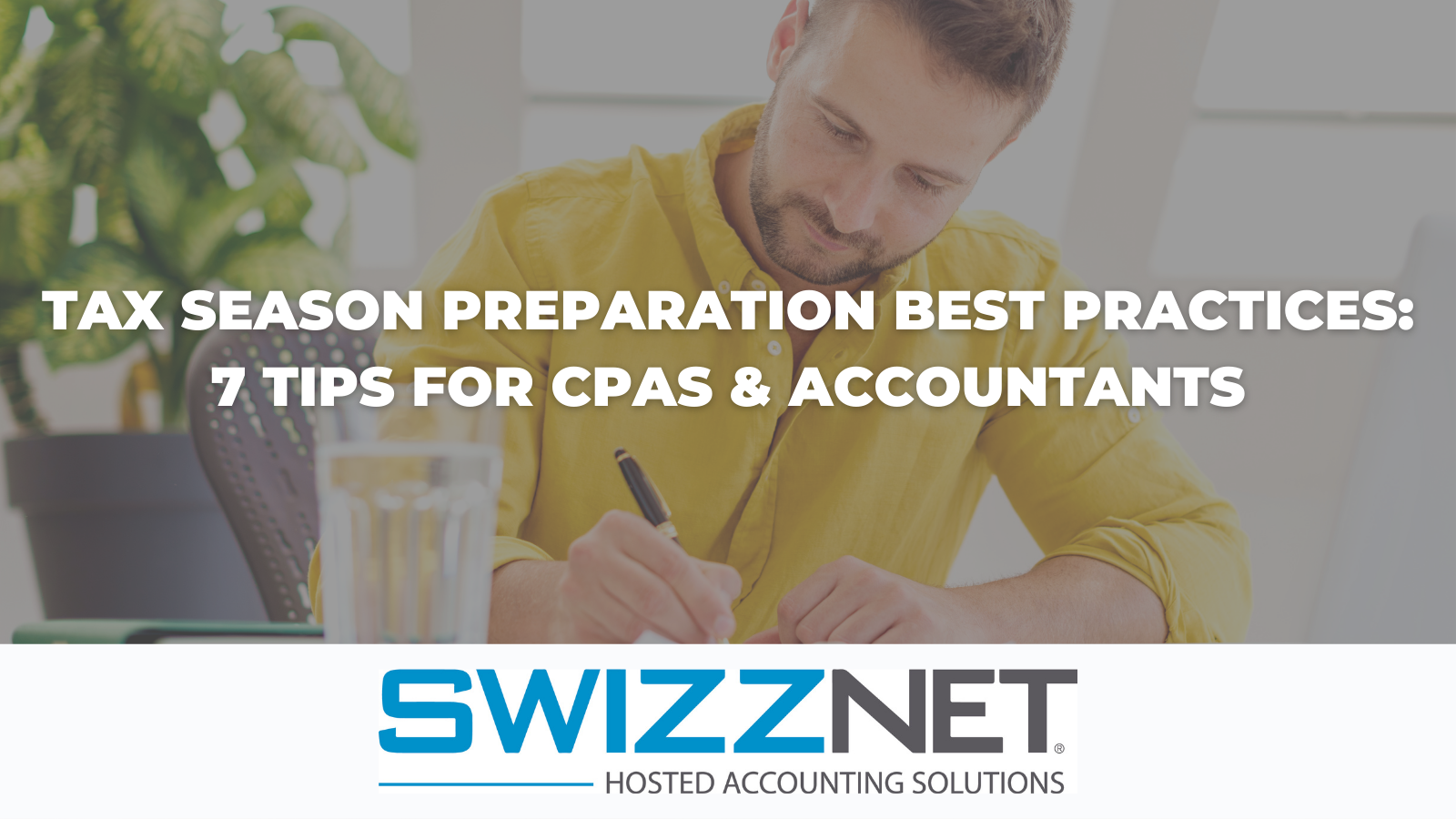As of August 24, 2021, there were 669,130 actively licensed CPAs in the United States. It’s a safe assumption to say that not one of them would describe the busy season – roughly January through May – as easy by any stretch of the imagination. Add in a little economic insecurity and a continuing pandemic, and you get a tax season we’d all prefer to file away.
New rules, regulations, and restrictions aside, there are steps every CPA and accountant can take – whether you work with a big firm or have your own practice – to prepare for the upcoming tax season.
1. Reassess Your Processes
First and foremost, review the past tax year, reassess what did and didn’t work, and adjust as necessary, whether that means additional tax preparer training or moving to a virtual-only return process.
Start by evaluating your digital solutions for sending and receiving client documents. About 152.47 million tax returns were filed in the 2021 tax filing season and, of those, 140.86 million were submitted to the electronic filing system – with tax professionals preparing 75.9 million of them. Reassess how you’re sending documents (engagement letters and organizers) as well as how you’re using electronic signatures and secure portal solutions to help clients who are looking for access to those documents.
Next, take a look at the overall client experience and ask yourself the following questions:
- How do you schedule appointments?
- How do you communicate and send documents?
- Where were bottlenecks during the last tax season?
- How can you better suit your clients and your staff?
Identifying key areas for improvement shows you adjustments that need to be made and gets everyone aligned and on the same page.
2. Ensure Cybersecurity and Compliance
As much of the world shifts to remote work, industries are demanding new, more stringent cybersecurity and compliance standards to keep their businesses protected. Look at it this way – it’s not an inconvenience, but a service to your clients. Staying compliant helps prevent fraud and data breaches, and neither you nor your clients want to get near any of that.
To make sure you’re doing all you can to work securely, follow the IRS “Security Six” to ensure client information is never compromised. This includes implementing the following:
- Antivirus software and setting it to automatically update so you’re always current.
- Firewalls that protect your computer or network from malicious or unnecessary network traffic and malware
- Two-factor authentication as an added line of defense
- Backup software/services so you have copies of all your files
- Encryption that turns data on computers into unreadable files for unauthorized users
- A written data security plan, which is required by the U.S. Federal Trade Commission’s safeguards rule.
For more details on security best practices, check out this resource, which details Swizznet’s approach and thinking on the topic.
3. Specialize Your Practice
Consider adding Client Accounting and Advisory Services (CAAS) that upgrade your business from a “bookkeeper” to a strategic partner. This has become a much higher priority in light of the pandemic – we’re all standing on new territory, and clients place a high importance on tax professionals with the know-how to help them find their footing. Of course, taking this approach means specializing to become a trusted expert in a particular field, but the benefits can be significant. If you specialize, you gain clients who recognize you as a reliable tax expert in your chosen industry or market segment and the ability to make deep relationships with those clients.
Chances are, you did a little bit of advisory work during the past year due to the impact of the pandemic, and it’s not a bad idea to lean further into it if you have the resources. You’re not going to go from general firm to culinary gastropub accounting giant overnight, but adding advisory services makes you stand out to clients who work in the specific groups you choose to serve, which can make your business more profitable and more competitive in the long run.
4. Revisit Your Client List
Just as you reassess your processes, it’s also important to take time to look at your client list to proactively head off any issues. While you would like to think every client is wonderful and just a dream to work with, the reality is that there are always “problem” clients. Did they come in on April 14 and demand immediate service? Were they disorganized in a way that caused you to waste time and resources?
Now is the time to weigh the pros and cons of “problem” clients and either cut ties with them before they take up more of your time or let them know of new (to them) policies that will hopefully head off any issues this time around. It might be hard to have that conversation, but removing the more problematic clients from your roster opens up time to work with high-value clients and results in less stress — which is something every accountant and CPA can appreciate.
5. Determine Your Capacity
While most CPAs and accountants accept that working crazy hours a few months of the year is the norm, it’s not healthy and leads to burnout. We know this going in, but every year we say that we can “take on one more client” when, in reality, it’s not doing us any favors.
Instead of booking your team to overcapacity, take some time to determine what additional staffing you need now and work to build your capacity so that you know if you need to hire, delegate, or outsource where appropriate and when possible.
Another idea is to consider hiring someone to only interact with clients, make appointments, and make sure tax forms are moving through the process in a timely way. This frees you up from the administrative process – which we know can be both time-consuming and tedious – and frees you up to actually do the returns in a more manageable fashion.
6. Prepare for the Next Busy Season
As we’ve said over and over – you know you’re going to be busy, but it can still feel like things are out of control when you’re in the midst of it all. Get started early with certain processes when possible, such as testing out new technology, sending out engagement letters, and ensuring you have all you need for the 1099s and W-9s so you’re not scrambling at the deadline.
Proactively schedule when you plan to do certain tax returns based on what you know about the client. Not only does this keep you from overloading yourself past capacity, but this allows you to better communicate with clients about when their tax return will be processed and finished.
If possible, pace out how much needs to be done each day, and ensure they’re all done at least a week prior to the deadline. While this is contingent on getting materials from clients on time, which is always a challenge, let them know the time frame and that, if they’re late with tax documents, their return will be bumped and completed as time allows.
7. Remote Is Here to Stay
Remote work is more prevalent than ever for CPAs and accountants, which means there are many new opportunities enabled by cloud technology. Data indicates that most firms foresee a rise in remote work that will remain in place going forward. Building and supporting the infrastructure required for a remote workforce has become a critical aspect of the business, and it’s important to consider for firms that want to attract top talent.
Tax software is a vital tool for remote professionals in the industry, but it’s not the only tool you should consider. To become remote capable and, more importantly, remote successful, there are numerous considerations that need to be undertaken carefully. When you’re ready to find out how your firm can successfully transform to a digital practice, Swizznet is here to make that a reality. Contact us today to learn more about cloud hosting for accountants.

